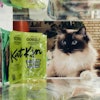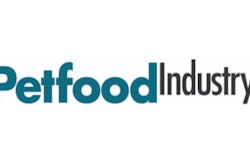
As reported in the November 2012 issue of Petfood Industry magazine, the US Food and Drug Administration (FDA) published a draft Compliance Policy Guide (CPG) regarding therapeutic pet foods. As of April 2016, that guidance document is now final (see link in sidebar). The agency did receive a handful of comments from the public in response to publication of the draft document, and there were considerable clarifications and additional information included in the final guidance. However, it does not appear that those comments materially affected FDA's perspective on the matter.
Briefly, therapeutic pet foods (i.e., pet foods intended for the diagnosis, cure, mitigation, treatment or prevention of disease) are considered by FDA to be drugs as defined by the Federal Food, Drug and Cosmetic Act. Further, these products are subject to enforcement action as adulterated and/or misbranded drugs because they have not been approved via New Animal Drug Applications, nor are they typically in compliance with other requirements as stipulated by law, such as drug registration/listing and conformance to current good manufacturing practices as applicable to animal drugs.
Intent to offer a product as a drug can be established by claims on the label itself, in "labeling" (e.g., brochures, shelf talkers, even websites), and through advertisements, as well. Thus, any communication by the pet food company to the public that states or implies the use of a pet food with treatment, prevention, etc., of disease is potentially actionable by regulators.
That said, FDA tacitly recognizes the role of therapeutic pet foods as a vital component of the veterinary practitioner’s arsenal of available modalities for management of a number of medical conditions. Strict adherence to the rule of law would essentially eliminate this category of pet foods, which ultimately would be a disservice to animal health. Further, the veterinarian requires information on the diet/disease relationship to understand and properly dispense the product. On the other hand, the same information in the pet owner’s hands without veterinary oversight could lead to misdiagnosis and inappropriate use, potentially harming the animal. So, if the products are to remain on the market, the agency believes that reasonable controls must be in place to mitigate that risk.
For decades, FDA has exercised enforcement discretion with regard to distribution of this category of pet foods. In the final CPG, the agency expressly notes the conditions under which it is less likely to recommend or initiate enforcement action against a therapeutic pet food. With regard to the pet food itself, it must:
- be made available to the public only through licensed veterinarians or through retail or internet sales to individuals purchasing the product under the direction of a veterinarian;
- not present a known safety risk when used as labeled;
- be manufactured at a facility registered under the Bioterrorism Act;
- be manufactured in accordance with current good manufacturing practices and other regulatory requirements; and
- contain only ingredients that are generally recognized as safe, approved food additives or defined in the 2015 Official Publication of the Association of American Feed Control Officials.
Further, with respect to the marketing of the therapeutic pet food, enforcement discretion would be more likely if:
- the product label does not make representations that it can be used to treat or prevent disease;
- distribution of labeling bearing any disease claims for the product is limited so that it is provided only to veterinary professionals;
- electronic resources for the dissemination of information regarding intended use for disease treatment/prevention are secured so that they are available only to veterinary professionals;
- the product’s label and labeling comply with all pertinent FDA regulations for animal feed;
- the product is not marketed as an alternative to approved new animal drugs; and
- the label and labeling are not false and misleading in other respects.
In its notice of the availability of the draft CPG, FDA noted the decline in adherence to its informal policies over the years. Now with this CPG in place, it is not known whether this may be the harbinger of stronger enforcement efforts by FDA and/or state feed control officials. Technically, as it is not regulation per se, this guidance is not binding on any party, but rather only "represents the current thinking of FDA on this topic." Still, to avoid the risk of enforcement action, it appears prudent for manufacturers of therapeutic pet foods to abide by this guidance.
For more insights by Dr. Dzanis
www.petfoodindustry.com/authors/2
Guidance and more information
Even though the guidance is now final, the document is open for public comment. Electronic comments may be sent to www.regulations.gov re: Docket No. FDA–2012–D–0755.
Link to Compliance Policy Guide Sec. 690.150 Labeling and Marketing of Dog and Cat Food Diets Intended to Diagnose, Cure, Mitigate, Treat or Prevent Diseases: http://goo.gl/jJS8Md


















